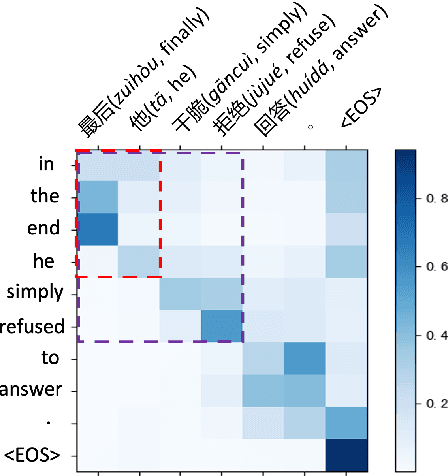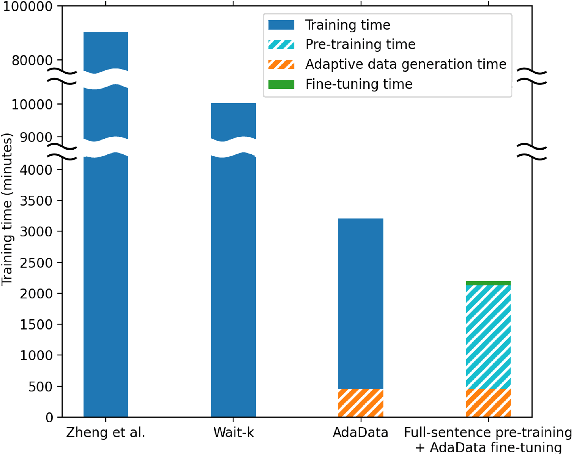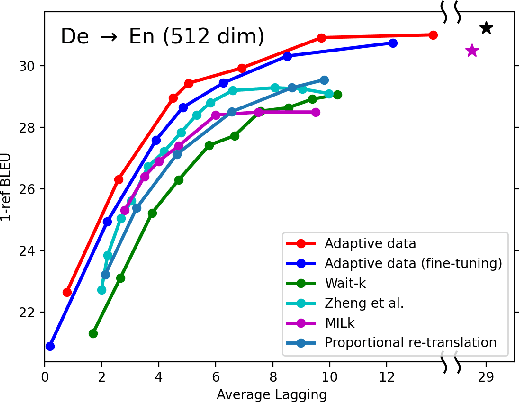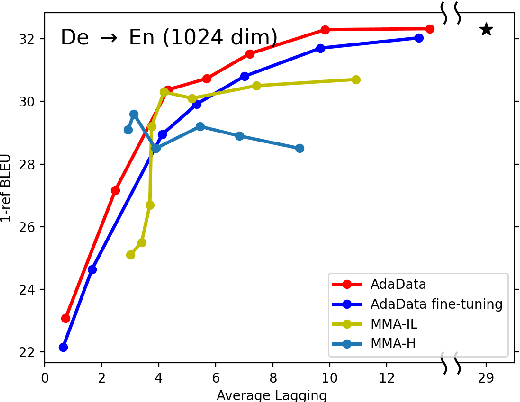Guangxu Xun
Data-Driven Adaptive Simultaneous Machine Translation
Apr 27, 2022



Abstract:In simultaneous translation (SimulMT), the most widely used strategy is the wait-k policy thanks to its simplicity and effectiveness in balancing translation quality and latency. However, wait-k suffers from two major limitations: (a) it is a fixed policy that can not adaptively adjust latency given context, and (b) its training is much slower than full-sentence translation. To alleviate these issues, we propose a novel and efficient training scheme for adaptive SimulMT by augmenting the training corpus with adaptive prefix-to-prefix pairs, while the training complexity remains the same as that of training full-sentence translation models. Experiments on two language pairs show that our method outperforms all strong baselines in terms of translation quality and latency.
HSCJN: A Holistic Semantic Constraint Joint Network for Diverse Response Generation
Jan 20, 2020



Abstract:The sequence-to-sequence (Seq2Seq) model generates target words iteratively given the previously observed words during decoding process, which results in the loss of the holistic semantics in the target response and the complete semantic relationship between responses and dialogue histories. In this paper, we propose a generic diversity-promoting joint network, called Holistic Semantic Constraint Joint Network (HSCJN), enhancing the global sentence information, and then regularizing the objective function with penalizing the low entropy output. Our network introduces more target information to improve diversity, and captures direct semantic information to better constrain the relevance simultaneously. Moreover, the proposed method can be easily applied to any Seq2Seq structure. Extensive experiments on several dialogue corpuses show that our method effectively improves both semantic consistency and diversity of generated responses, and achieves better performance than other competitive methods.
 Add to Chrome
Add to Chrome Add to Firefox
Add to Firefox Add to Edge
Add to Edge